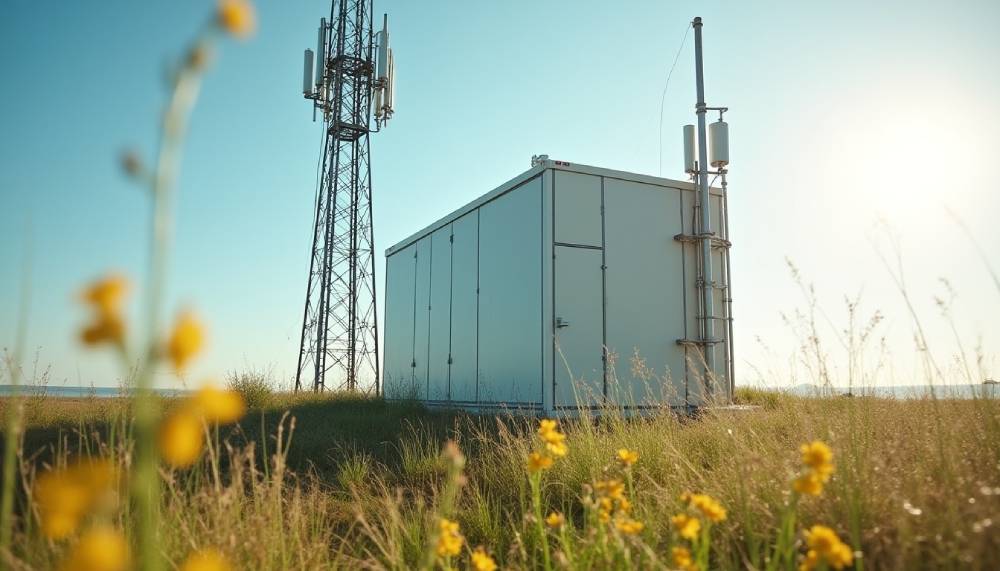In the fast-evolving world of telecom infrastructure, time and reliability are everything. As networks expand to meet rising demand for 5G, fixed wireless, and fiber connectivity, the way telecom sites are designed and built is changing — fast. A key driver of that change is material innovation — from advanced composites to modular, prefabricated shelters that can be deployed in days instead of months.
Below, we’ll explore how modular telecom shelter materials and prefab telecom site deployment are transforming the industry — delivering stronger, lighter, and faster builds across diverse environments.
1. From Concrete to Composites: The New Era of Telecom Shelters
For decades, traditional concrete shelters dominated telecom infrastructure. While sturdy, they were also heavy, costly to transport, and time-intensive to install. Modern builds are shifting toward composite materials and lightweight alloys that deliver the same protection at a fraction of the weight.
🔧 Leading Composite Materials
- Fiber-reinforced polymers (FRP): Extremely durable and corrosion-resistant, ideal for coastal or high-humidity regions.
- Aluminum sandwich panels: Offer high structural strength while minimizing weight — enabling faster crane lifts and lower foundation requirements.
- Thermally insulated polymer walls: Improve energy efficiency and reduce HVAC loads, cutting operational costs.
Together, these materials offer a combination of durability, weather resistance, and speed of deployment that traditional materials simply can’t match.
2. Modular and Pre-Fab: The Future of Site Deployment
Prefabrication is no longer a fringe concept — it’s becoming the standard for modern telecom site builds.
⚙️ What “Prefab” Really Means
Prefab shelters are manufactured off-site in controlled environments and shipped ready for final installation. This drastically reduces on-site labor, permitting delays, and weather-related slowdowns.
For large-scale operators and network expansion projects, this can mean:
- 30–50% shorter build cycles
- Reduced capital costs due to standardized fabrication
- Improved quality control through repeatable, factory-level consistency
🧱 Modular Design Advantages
Modern shelters are also modular, meaning they can be expanded or reconfigured as network demands evolve. Whether housing new fiber distribution panels or 5G small-cell equipment, modules can be swapped, stacked, or scaled without starting from scratch.
3. Rapid Deployment in Action
Telecom companies are now deploying prefab telecom site solutions in places once considered too remote or too costly for traditional builds — including deserts, mountaintops, and islands.
🚀 Real-World Advantages
- Smaller foundation requirements: Lightweight composites allow faster prep and lower transportation costs.
- Integrated systems: Prefab units can ship with power, HVAC, and fiber routing pre-installed — ready for plug-and-play deployment.
- Extreme durability: New coatings and composite panels resist UV exposure, wind, and corrosion for decades.
This approach is especially impactful in rural broadband and emergency communications deployments, where speed and reliability are mission-critical.
4. Sustainability and Lifecycle Benefits
The shift to innovative materials is also improving the sustainability profile of telecom builds:
- Recyclable materials such as aluminum and polymer composites minimize waste.
- Improved thermal insulation reduces ongoing power consumption.
- Longer lifespan shelters reduce replacement and maintenance costs over the network’s lifecycle.
In short, material innovation supports both the environmental and economic sustainability goals of modern telecom operators.
5. Looking Ahead: The Next Generation of Shelter Design
The next wave of telecom infrastructure will continue to push the boundaries of material science. Expect to see:
- Smart composite materials that self-monitor for stress or damage.
- 3D-printed shelter components for ultra-rapid on-site builds.
- Hybrid renewable power integration directly within prefab modules.
As the industry evolves, one thing is clear: the future of telecom site deployment will be modular, efficient, and built from smarter materials.
Final Thoughts
The days of heavy concrete and long construction timelines are fading fast. Today’s modular telecom shelter materials and prefab telecom site deployment techniques are rewriting the rules — making it possible to deliver high-quality, reliable infrastructure faster than ever before.
At USWiFi, we stay ahead of these innovations to help clients build smarter, faster, and more resilient networks across the country.

